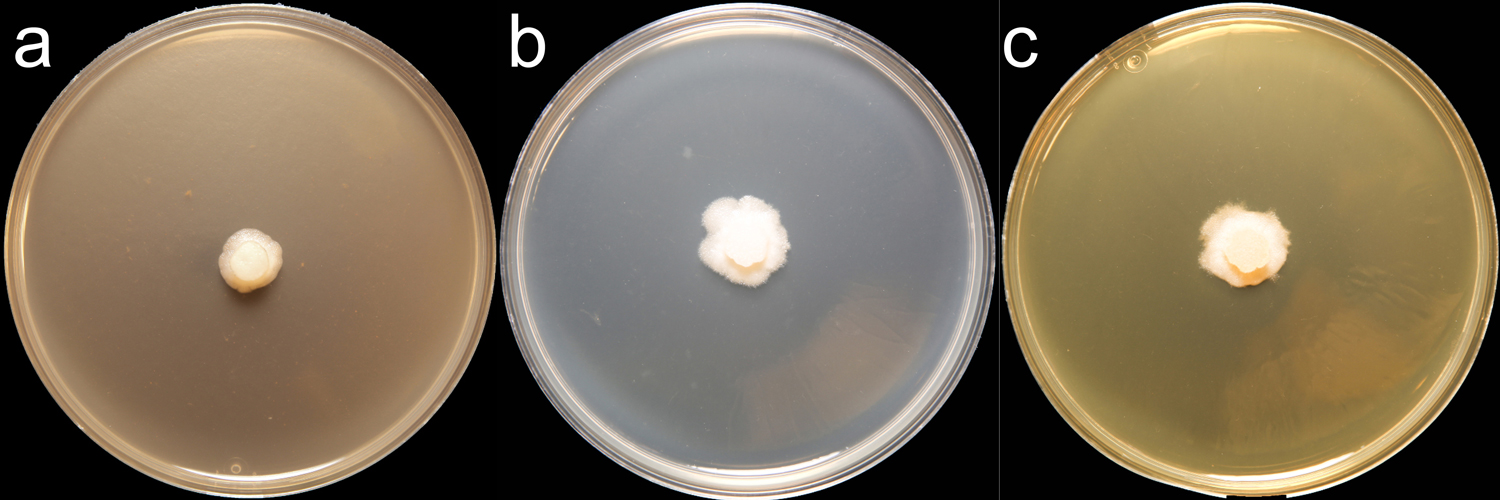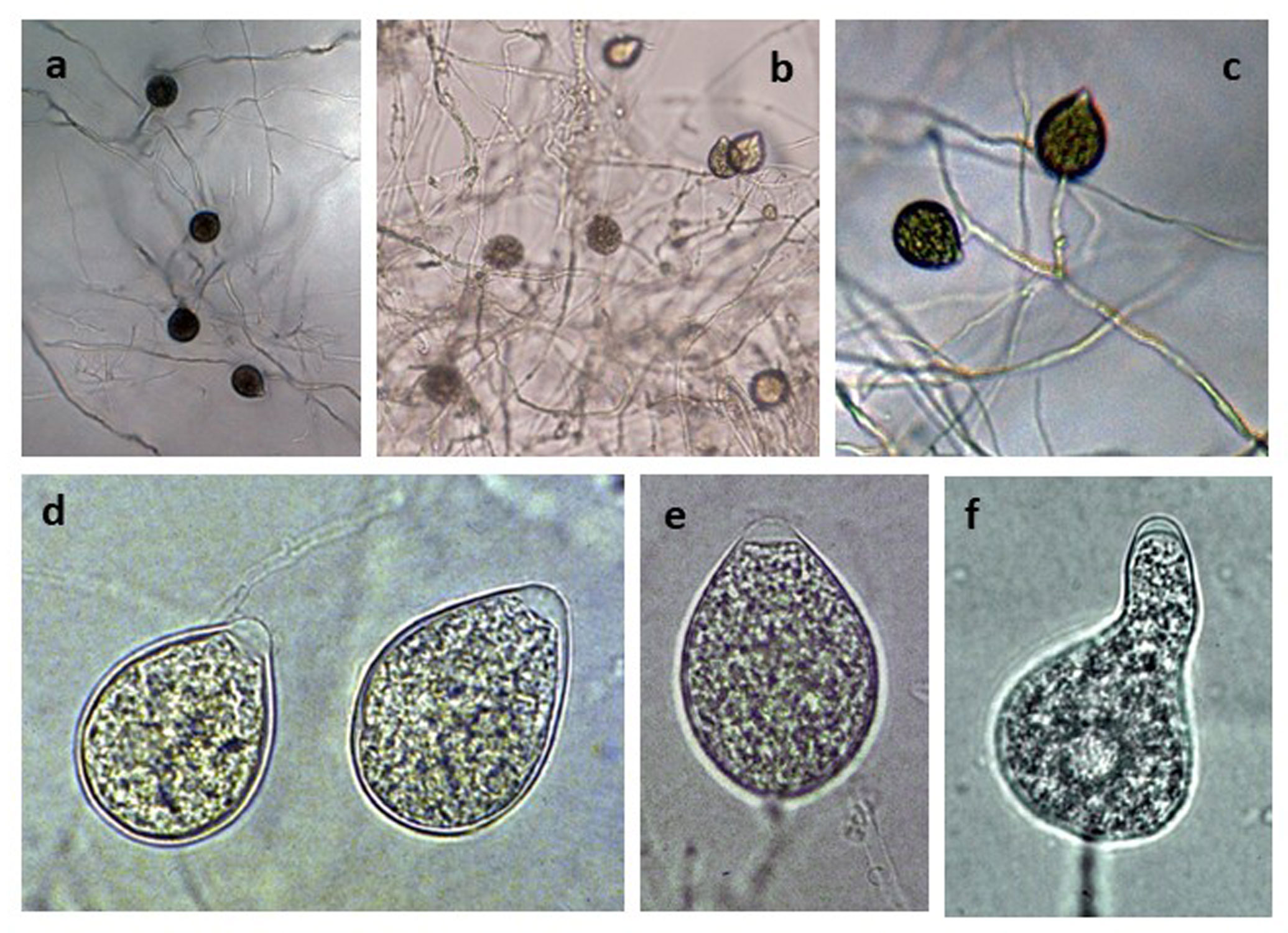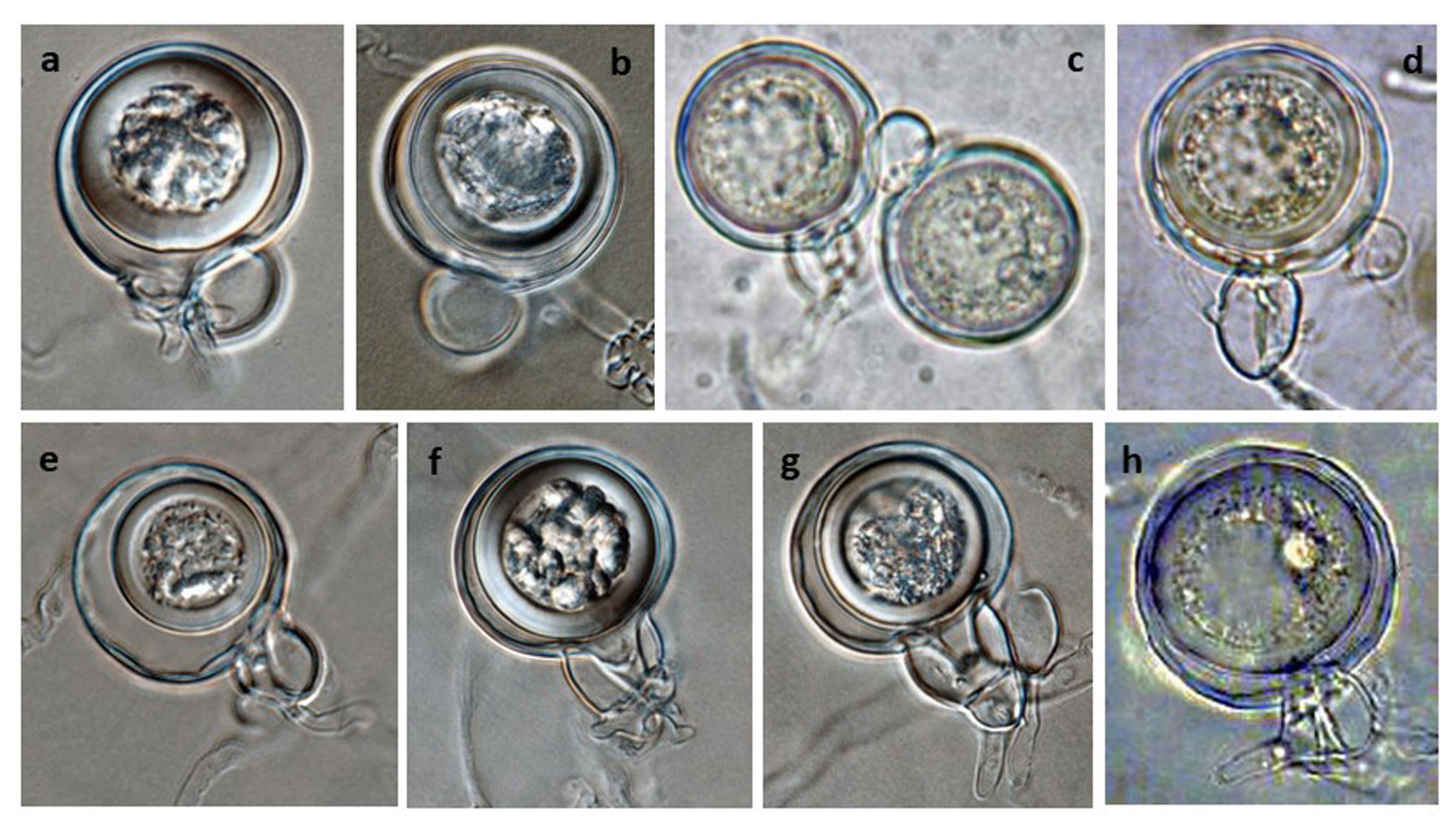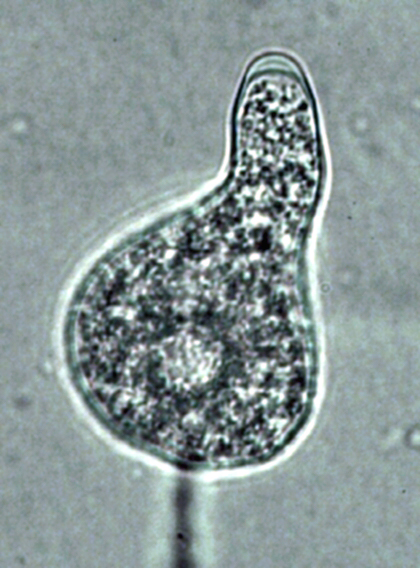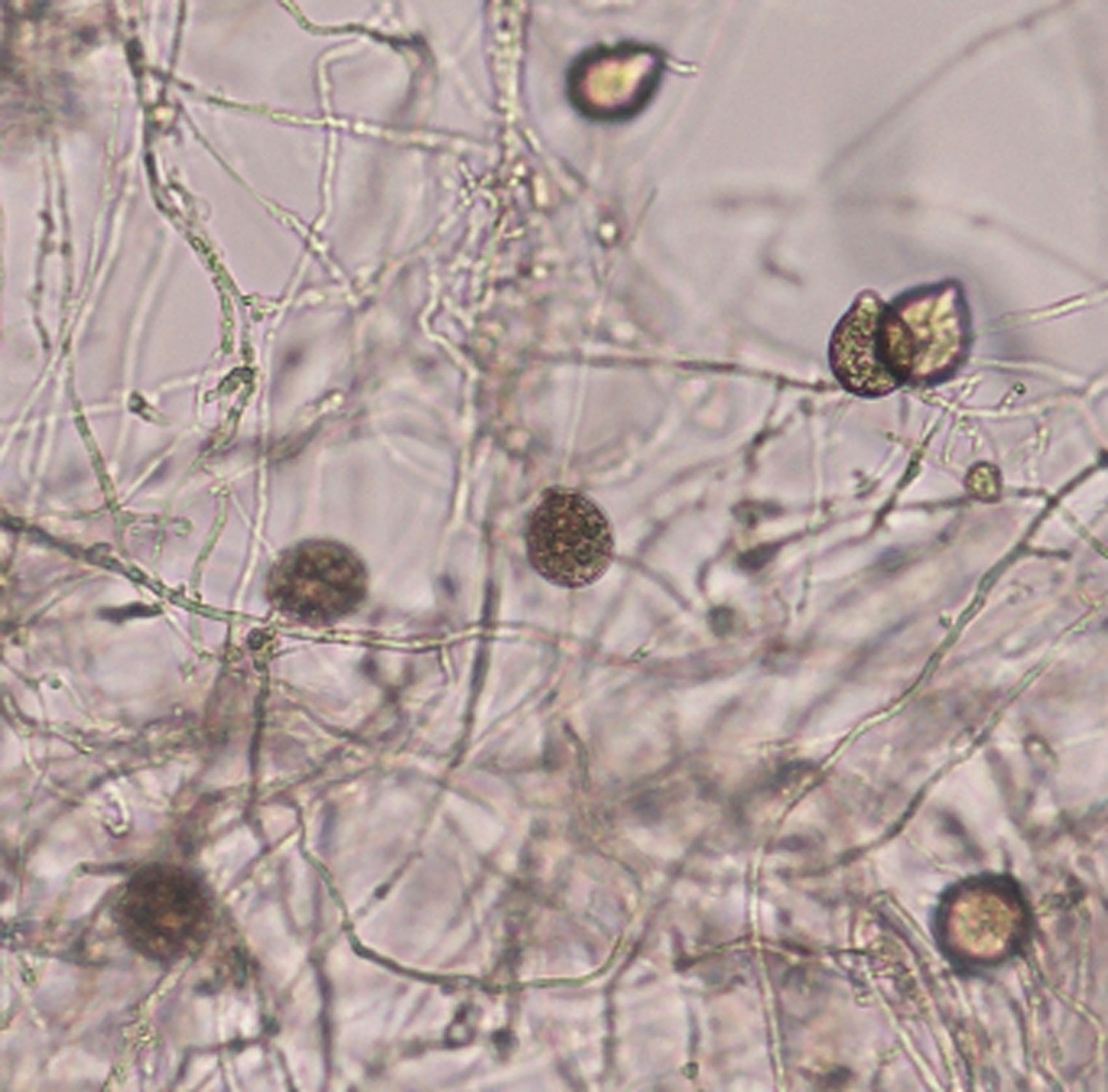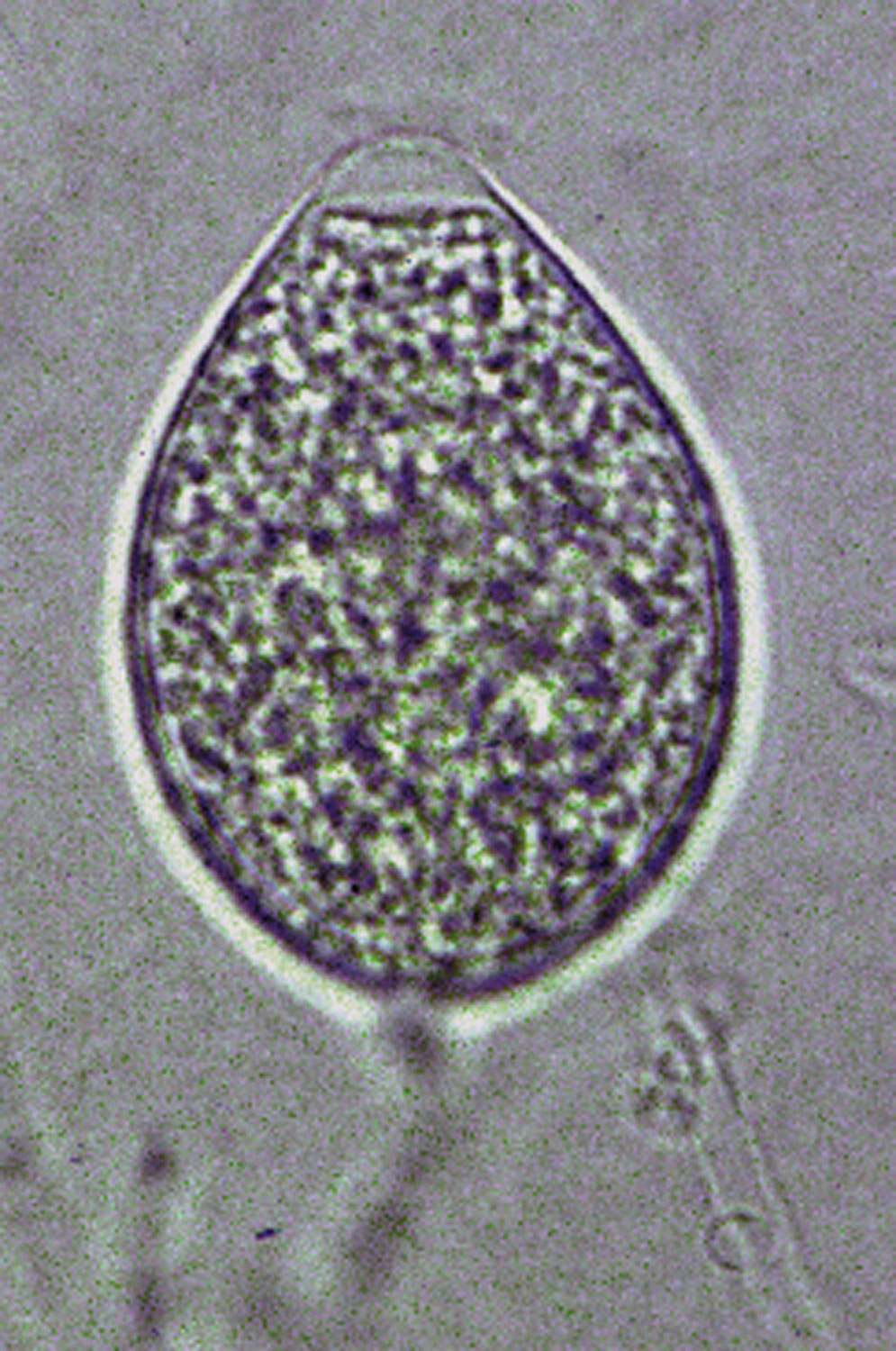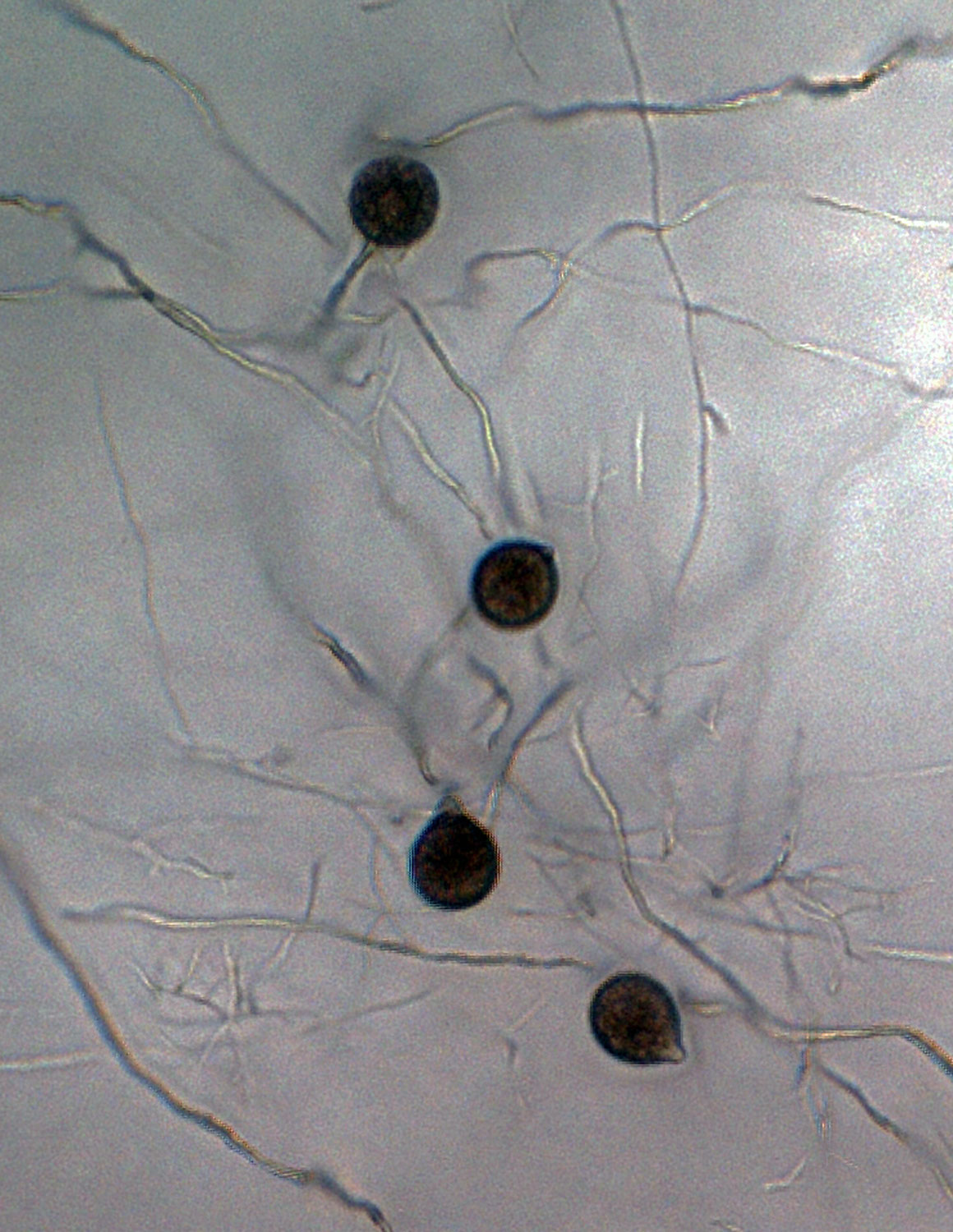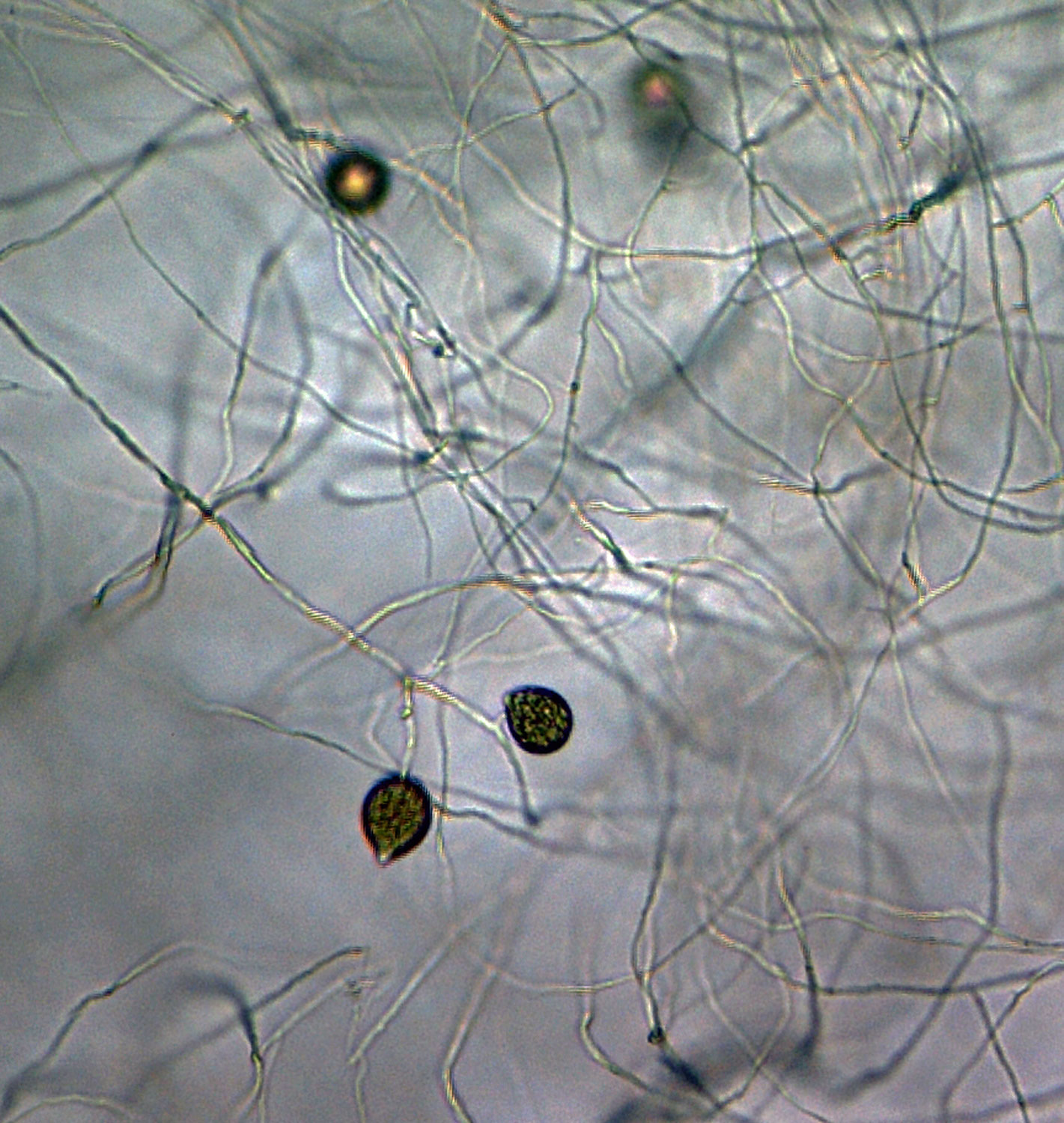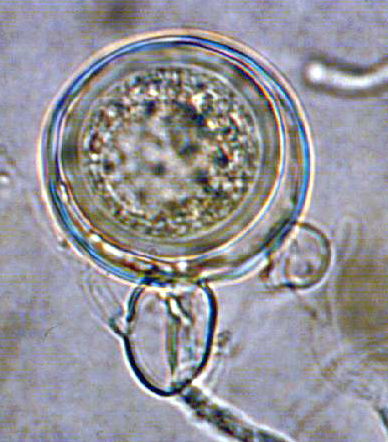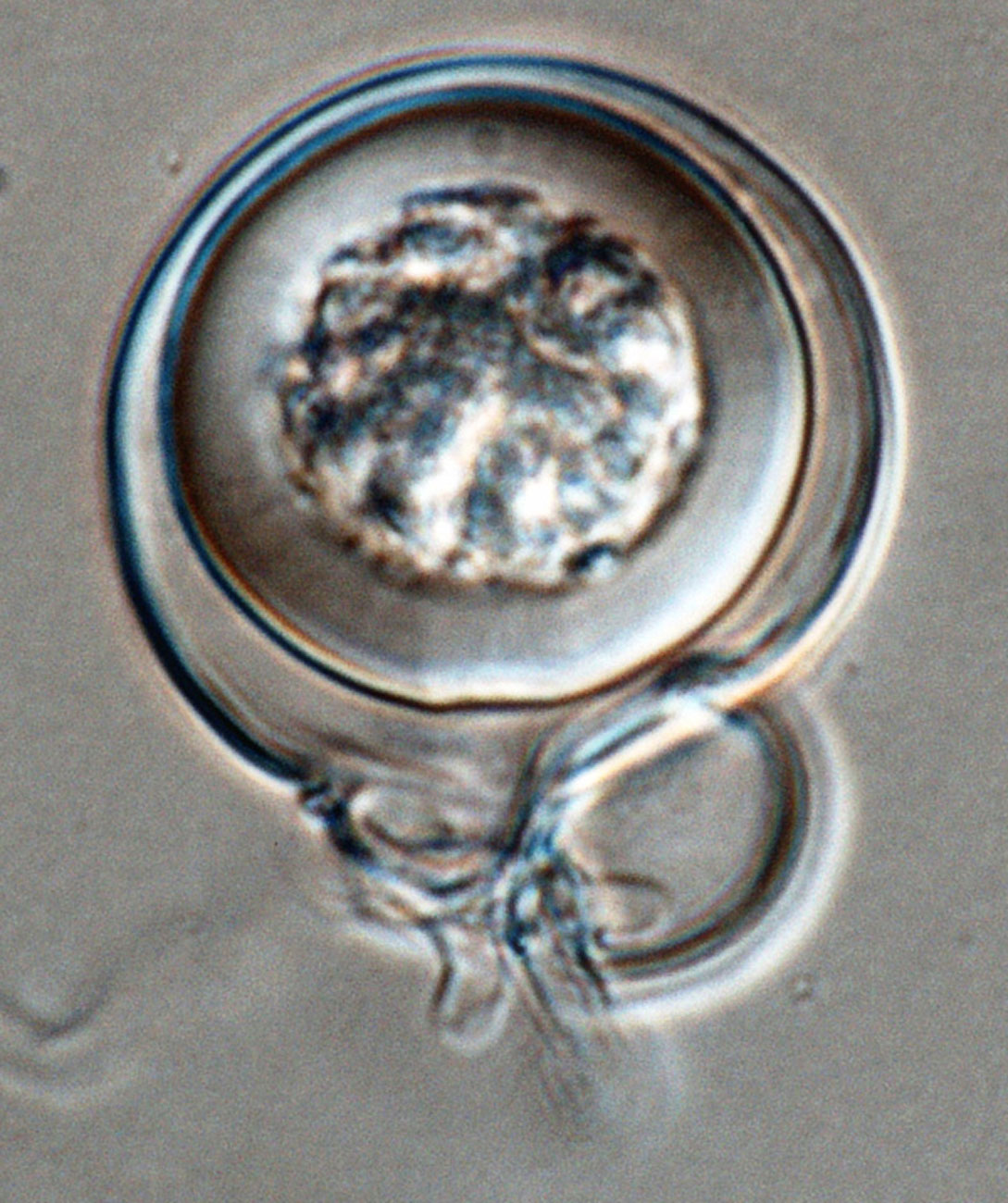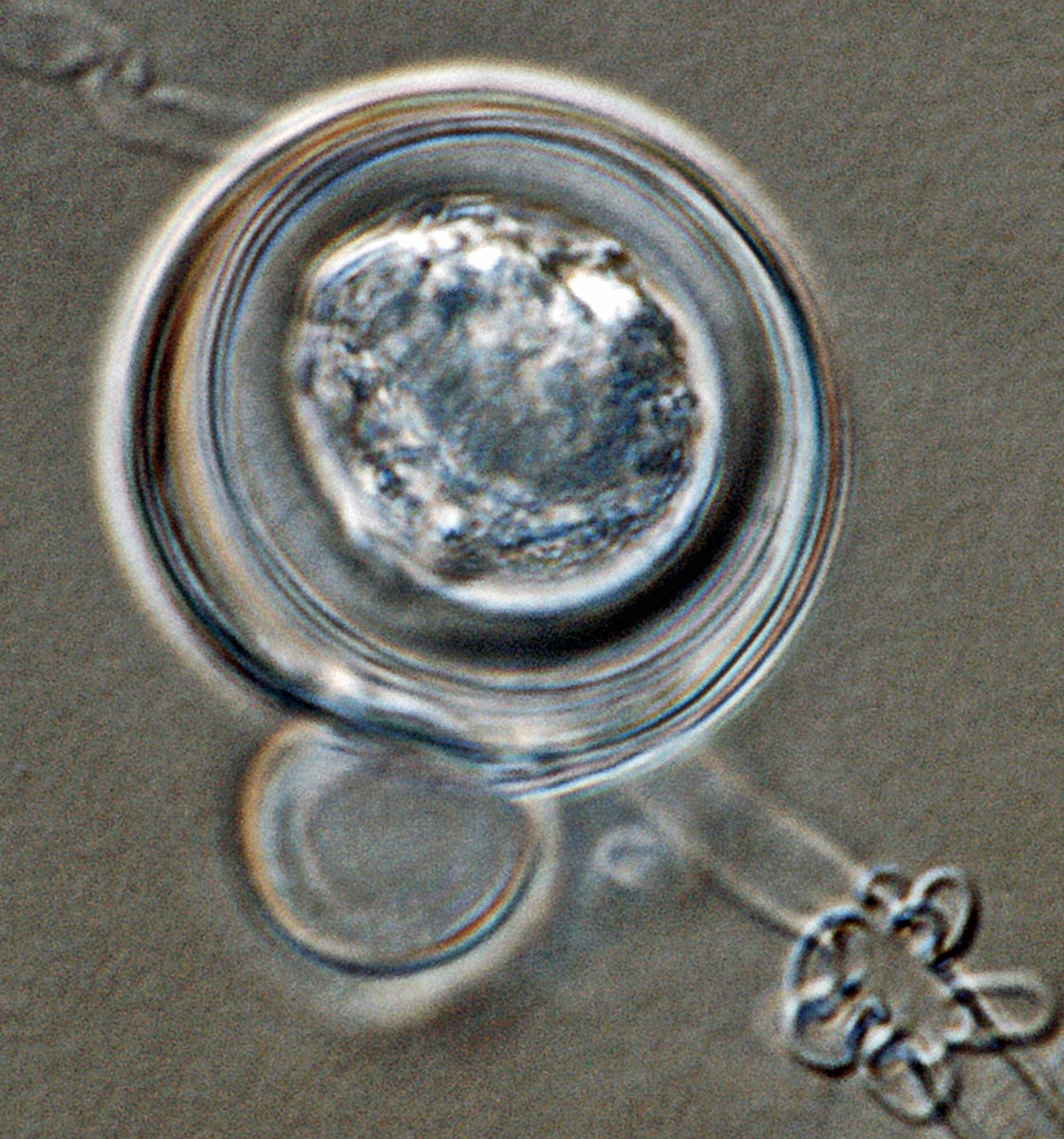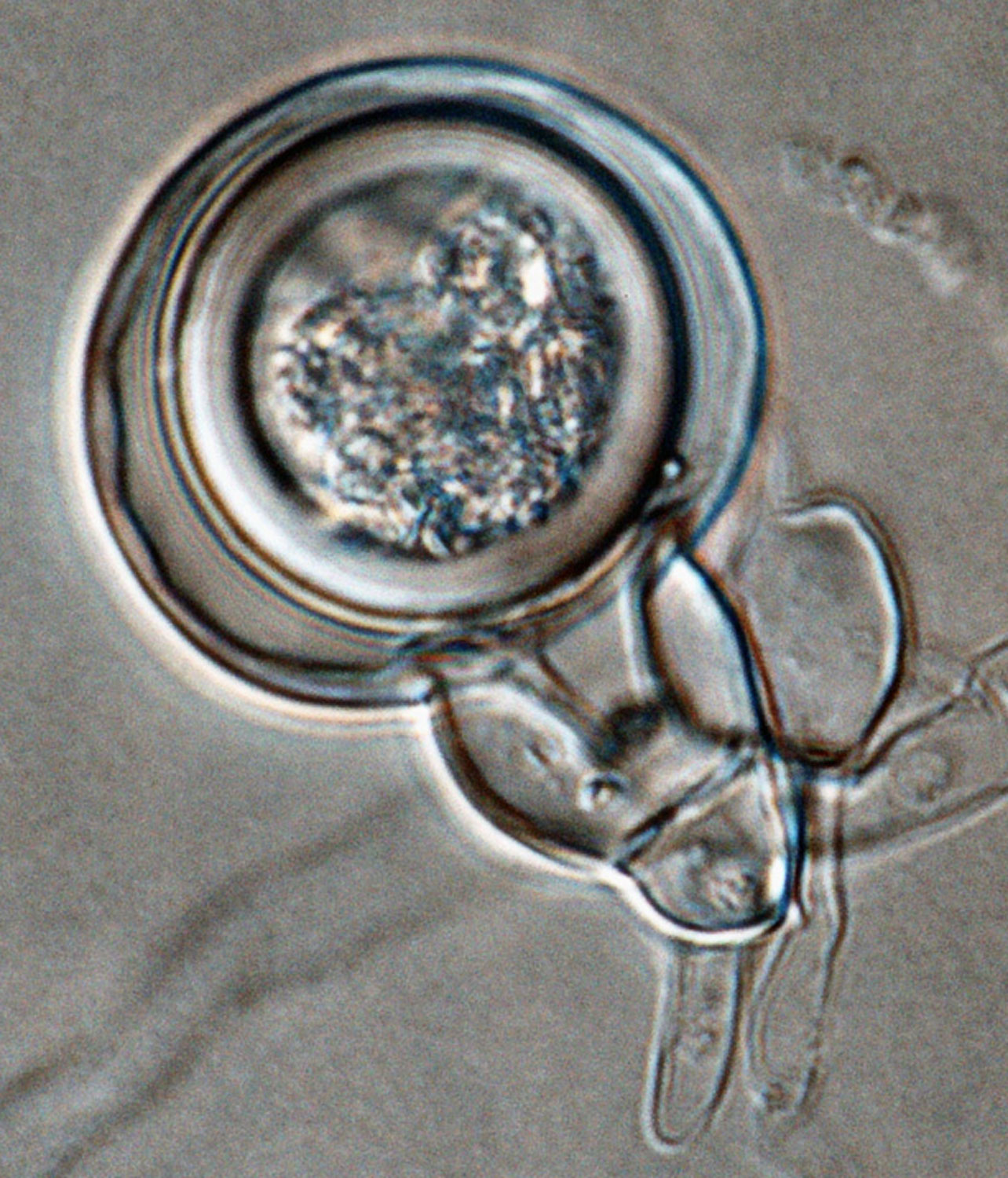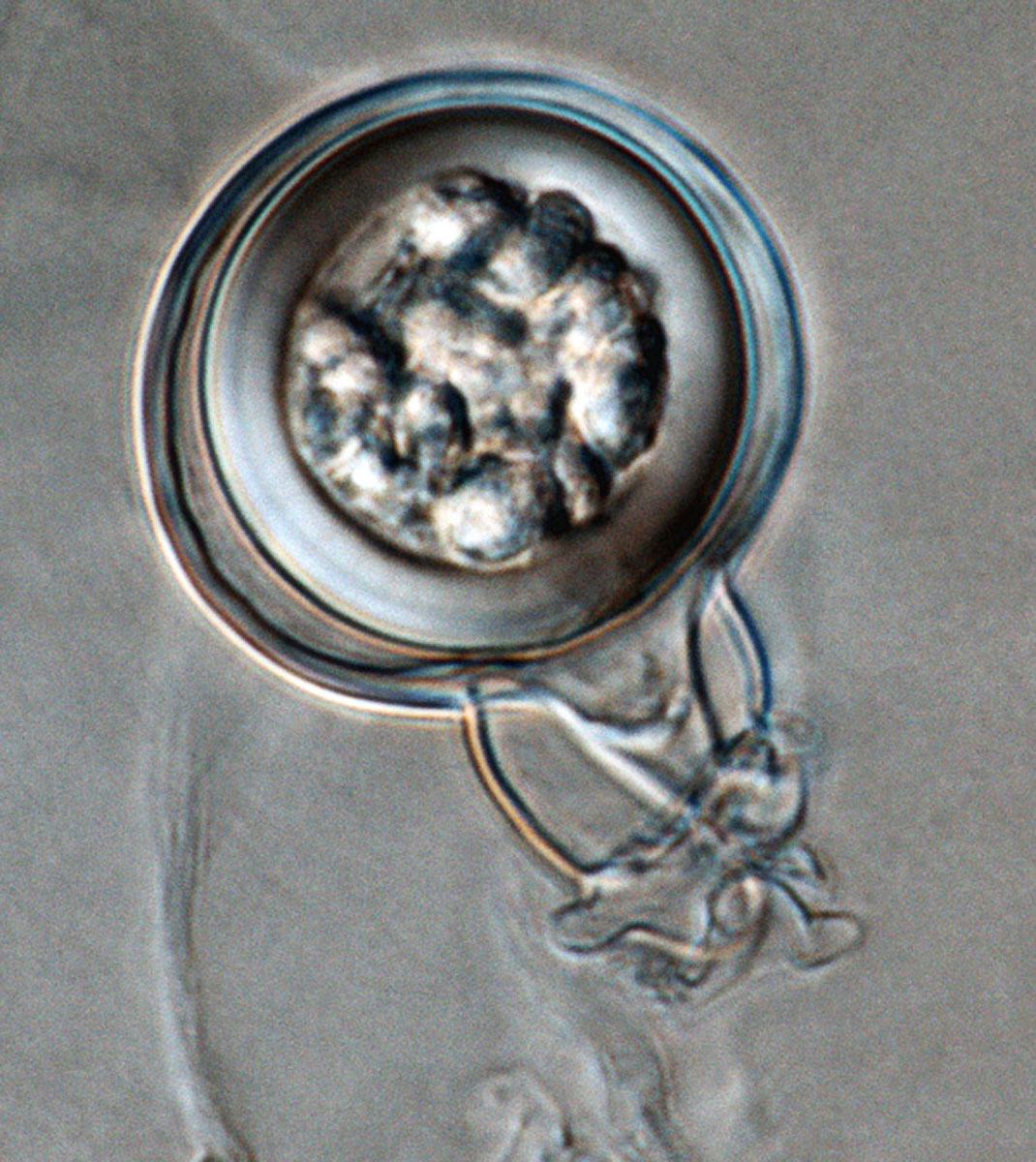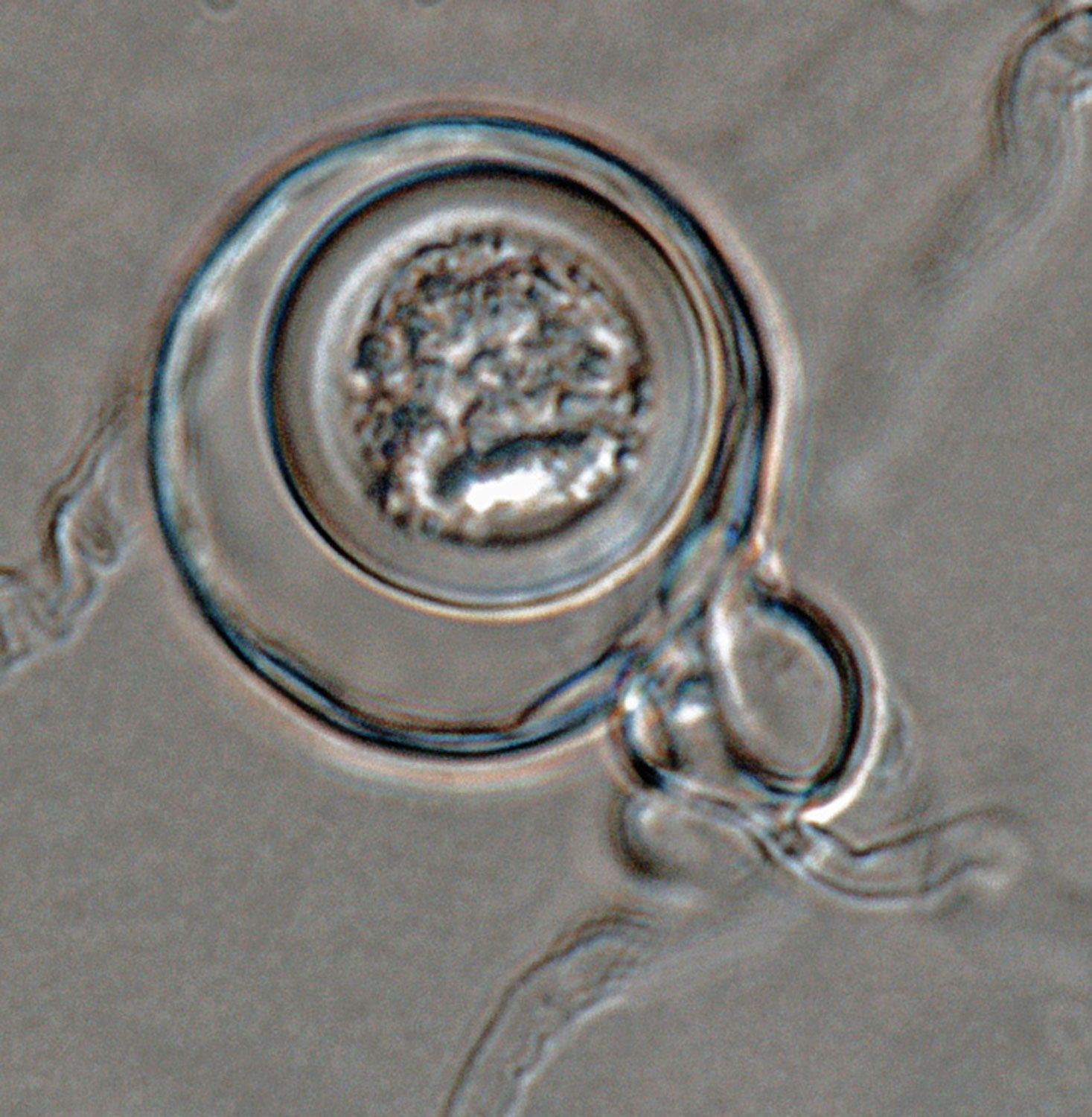Phytophthora gloveri
|
Phytophthora spp. in subclade 2b: portion of the seven-loci ML phylogeny featuring the type cultures of 212 described species (by T. Bourret). Notice the position of P. gloveri Ex-type CBS 121969= S&T BL 36. Gloria Abad, USDA S&T.
|
|
Phytophthora spp. in subclade 2b: Morphological Tabular key (PDF) and Tabular key legends (PDF) in IDphy2 KEY SECTION. Notice the data of P. gloveri Ex-type CBS 121969= S&T BL 36. Gloria Abad, USDA S&T.
|
|
Phytophthora glovera (CPHST BL 36) colonies of the ex-type grown for 7 days on (a) V8® Agar, (b) potato dextrose agar, and (c) malt extract agar; photo by Krysta Jennings and Leandra Knight, USDA-APHIS-PPQ |
|
Phytophthora glovera (CPHST BL 36) asexual phase of the ex-type: (a–c) sporangia produced in simple sympodial sporangiphores, (d–e) different shapes of semipapillate persistent sporangia; photos by Gloria Abad, USDA-APHIS-PPQ. |
|
Phytophthora glovera (CPHST BL 36) sexual phase of the ex-type: (a–h) smooth oogonia with aplerotic oospores, and (a, b) paragynous antheridia, (c, d) amphyginous and paragynous antheridia, (e–h) amphyginous antheridia, (g, h) antheridia with finger-like projections; photos by Gloria Abad, USDA-APHIS-PPQ. |
|
Phytophthora glovera (CPHST BL 36) asexual phase of the ex-type: obpyriform semipapillate persistent sporangium; photo by Gloria Abad, USDA-APHIS-PPQ. |
|
Phytophthora glovera (CPHST BL 36) asexual phase of the ex-type: sporangia produced in simple sympodial sporangiphores; photo by Gloria Abad, USDA-APHIS-PPQ. |
|
Phytophthora glovera (CPHST BL 36) asexual phase of the ex-type: ovoid semipapillate persistent sporangium; photo by Gloria Abad, USDA-APHIS-PPQ. |
|
Phytophthora glovera (CPHST BL 36) asexual phase of the ex-type: ovoid semipapillate persistent sporangia; photo by Gloria Abad, USDA-APHIS-PPQ. |
|
Phytophthora glovera (CPHST BL 36) asexual phase of the ex-type: sporangia produced in simple sympodial sporangiphores; photo by Gloria Abad, USDA-APHIS-PPQ. |
|
Phytophthora glovera (CPHST BL 36) asexual phase of the ex-type: sporangia produced in simple sympodial sporangiphores; photo by Gloria Abad, USDA-APHIS-PPQ. |
|
Phytophthora glovera (CPHST BL 36) sexual phase of the ex-type: smooth oogonium with aplerotic oospore and amphigynous antheridium; photo by Gloria Abad, USDA-APHIS-PPQ. |
|
Phytophthora glovera (CPHST BL 36) sexual phase of the ex-type: smooth oogonium with aplerotic oospore, with paragynous antheridium; photo by Gloria Abad, USDA-APHIS-PPQ. |
|
Phytophthora glovera (CPHST BL 36) sexual phase of the ex-type: smooth oogonia with aplerotic oospores and paragynous antheridia; photo by Gloria Abad, USDA-APHIS-PPQ. |
|
Phytophthora glovera (CPHST BL 36) sexual phase of the ex-type: smooth oogonium with aplerotic oospore, with paragynous antheridium; photo by Gloria Abad, USDA-APHIS-PPQ. |
|
Phytophthora glovera (CPHST BL 36) sexual phase of the ex-type: smooth oogonium with aplerotic oospore and amphigynous antheridium with finger-like projections; photo by Gloria Abad, USDA-APHIS-PPQ. |
|
Phytophthora glovera (CPHST BL 36) sexual phase of the ex-type: smooth oogonium with aplerotic oospore and amphigynous antheridium; photo by Gloria Abad, USDA-APHIS-PPQ. |
|
Phytophthora glovera (CPHST BL 36) sexual phase of the ex-type: smooth oogonium with aplerotic oospore and amphigynous antheridium; photo by Gloria Abad, USDA-APHIS-PPQ. |
Name and publication
Phytophthora gloveri Abad & Shew (2011)
Abad ZG, Ivors KL, Gallup CA, Abad JA and Shew HD. 2011. Morphological and molecular characterization of Phytophthora glovera sp. nov. from tobacco in Brazil. Mycologia 103: 341–350.
Corresponding author: gloria.abad@aphis.usda.gov
Nomenclature
from Abad et al. (2011)
Mycobank
Etymology
Named to honor Mr. Derald Glover who worked in David Shew’s laboratory at the Dept. of Plant Pathology, NCSU from 1966 to 1999. Mr. Glover’s initial observation of Phytophthora-like sporangiasporangia:
sac within which zoospores form, especially when water is cooled to about 10°C below ambient temperature; in solid substrates, sporangia usually germinate by germ tubes
on the symptomatic roots of tobacco in water led to the initial isolation of the pathogen and the discovery of this new species.
Typification
Type: BRAZIL, Santa Catarina state close to Chapeco in southern part of Brazil from Nicotiana tabacum (tobacco ‘burley’ field) showing symptoms of ‘Amarelâo’, 10 Aug. 1995, collector David Shew; isolate 11099 #23, BPI 878720 (dried culture on baby carrot agar)
Ex-type: CBS 121969 and P11685 (WPC)
Sequences for ex-type in original manuscript: CBS 121969 = ITS AF279124
Ex-type in other collections
(ET) CBS 121969, WPC P11685, isolate 11099 #23 (D. Shew), S&T BL 36 (Abad), 62B4 (Hong)
Molecular identification
Voucher sequences for barcoding genes (ITS rDNA and COI) of the ex-type (see Molecular protocols page)
Phytophthora glovera isolate CPHST BL 36 (= P11685 WPC) = ITS rDNA MG865500, COI MH136895
Voucher sequences for Molecular Toolbox with seven genes (ITS, β-tub, COI, EF1α, HSP90, L10, and YPT1
(see Molecular protocols page) (In Progress)
Voucher sequences for Metabarcoding High-throughput Sequencing (HTS) Technologies [Molecular Operational Taxonomic Unit (MOTU)]
(see Molecular protocols page) (In Progress)
Sequences with multiple genes for ex-type in other sources
- NCBI: Phytophthora glovera CPHST BL 36
- NCBI: Phytophthora glovera WPC:11685C224
- NCBI: Phytophthora glovera Isolate 11099
- EPPO-Q-bank: Phytophthora glovera CBS 121969
- BOLDSYSTEMS: Phytophthora glovera (barcoding COI & ITS)
Position in multigenic phylogeny with 7 genes (ITS, β-tub, COI, EF1α, HSP90, L10, and YPT1)
Clade clade:
a taxonomic group of organisms classified together on the basis of homologous features traced to a common ancestor
2b
Morphological identification
Colonies and cardinal temperatures
Colony colony:
assemblage of hyphae which usually develops form a single source and grows in a coordinated way
morphology after 7 days on PDA, V-8, MEA with light stellate pattern and slow growth. Minimum growth temperature 13°C, optimum 25°C, and maximum 30°C.
Conditions for growth and sporulation
Sporangia are readily produced on sections of infected root pieces or agar plugs under water culture, 10% soil solution, and on solid media.
Asexual phase
SporangiaSporangia:
sac within which zoospores form, especially when water is cooled to about 10°C below ambient temperature; in solid substrates, sporangia usually germinate by germ tubes
semipapillatesemipapillate:
pertaining to the production of shallow having papilla that are not well developed, shallow and less nipple-like than fully papillate structures
; persistentpersistent:
pertaining to sporangia that remain attached to the sporangiophore and do not separate or detach easily (cf. caducous)
; ovoidovoid:
egg-shaped, with the widest part at the base of the sporangium and the narrow part at the apex
, obpyriformobpyriform:
inversely pear-shaped, i.e. with the widest part at the point of attachment (cf. pyriform)
, obclavate, subglobose, to irregular and distorted shapes (43–61 L x 26–36 W µm), occasionally with bilobed or trilobed apices, some showing prominent papillapapilla:
a small rounded or conic protuberance, generally translucent, on the wall of sporangia that breaks open and serves as the exit-point of zoospores
before liberation of zoosporeszoospores:
motile spore that forms within the sporangium and exits through the exit pore and is capable of swimming for several hours; it has both a tinsel flagellum and a whip-like flagellum
produced in unbranched or simple sympodial sporangiophores. Hyphal swellings absent. ChlamydosporesChlamydospores:
an asexual spore with a thickened inner wall that is delimited from the mycelium by a septum; may be terminal or intercalary, and survives for long periods in soil
absent.
Sexual phase
Homothallic. OogoniaOogonia:
the female gametangium in which the oospore forms after fertilization by the antheridium
smooth-walled (26–41 µm diam); antheridiaantheridia:
the male gametangium; a multinucleate, swollen hyphal tip affixed firmly to the wall of the female gametangium (the oogonium)
paragynousparagynous:
pertaining to the sexual stage in which the antheridium is attached to the side of the oogonium (cf. amphigynous)
or amphigynousamphigynous:
pertaining to the sexual stage in which the antheridium completely surrounds the stalk of the oogonium (cf. paragynous)
with two antheridiaantheridia:
the male gametangium; a multinucleate, swollen hyphal tip affixed firmly to the wall of the female gametangium (the oogonium)
per oogoniumoogonium:
the female gametangium in which the oospore forms after fertilization by the antheridium
sometimes produced; finger-like projections frequently observed; oosporesoospores:
zygote or thick-walled spore that forms within the oogonium after fertilization by the antheridium; may be long-lived
markedly apleroticaplerotic:
pertaining to a mature oospore that does not fill the oogonium; i.e. there is room left between the oospore wall and oogonium wall (cf. plerotic)
(23–30 µm diam).
Most typical characters
Phytophthora glovera is characterized by the presence of antheridiaantheridia:
the male gametangium; a multinucleate, swollen hyphal tip affixed firmly to the wall of the female gametangium (the oogonium)
paragynous or amphigynousamphigynous:
pertaining to the sexual stage in which the antheridium completely surrounds the stalk of the oogonium (cf. paragynous)
with two antheridiaantheridia:
the male gametangium; a multinucleate, swollen hyphal tip affixed firmly to the wall of the female gametangium (the oogonium)
per oogoniumoogonium:
the female gametangium in which the oospore forms after fertilization by the antheridium
sometimes produced.
Specimen (s) evaluated
Phytophthora glovera ex-type CPHST BL 36, duplicate of P11685 (World Phytophthora Collection)
Hosts and distribution
Distribution: South America (Brazil)
Substrate: roots
Disease note: root rot, stunting
Host: Nicotiana tabacum (Solanaceae)
Retrieved January 30, 2018 from U.S. National Fungus Collections Nomenclature Database.
Additional references and links
- SMML USDA-ARS: Phytophthora gloveri
- EPPO Global Database: Phytophthora gloveri
- Forest Phytophthoras of the world: Phytophthora gloveri
- CABI Digital Library: Phytophthora gloveri
- Encyclopedia of Life (EOL): Phytophthora gloveri
- Index Fungorum (IF): Phytophthora gloveri
- Google All Phytophthora glovera
- Google Images Phytophthora glovera
- Google Scholar Phytophthora glovera
Fact sheet author
Z. Gloria Abad, Ph.D., USDA-APHIS-PPQ-S&T Plant Pathogen Confirmatory Diagnostics Laboratory (PPCDL), United States of America.

